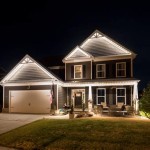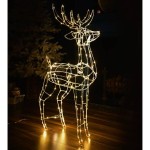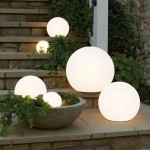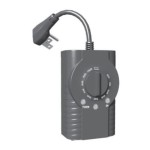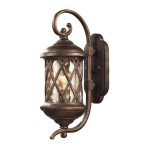How to Wire a Light Sensor for Outdoor Lighting
Outdoor lighting enhances safety, security, and aesthetics around a property. Automatic operation of these lights, triggered by natural light levels, provides convenience and energy savings. A light sensor, also known as a photocell, automates this process, turning lights on at dusk and off at dawn. Wiring a light sensor for outdoor lighting is a straightforward process, but it requires careful attention to safety and adherence to relevant electrical codes. This article provides a comprehensive guide on how to wire a light sensor for outdoor use, ensuring correct installation and reliable performance.
Before commencing any electrical work, it is imperative to prioritize safety. Electricity can be dangerous, and improper wiring can lead to hazards such as electrical shock, fire, and equipment damage. Therefore, thoroughly understanding the procedure and taking necessary precautions are crucial. This includes disabling the power supply to the circuit before beginning any work and confirming its deactivation using a voltage tester. Additionally, wearing appropriate personal protective equipment (PPE), such as insulated gloves and safety glasses, is highly recommended.
Understanding the Components and Wiring Diagrams
The first step in wiring a light sensor is understanding its components and the associated wiring diagram. Light sensors typically consist of three wires: a hot (or line) wire, a neutral wire, and a load wire. The hot wire provides the power supply, the neutral wire provides the return path for the current, and the load wire connects to the lighting fixture. The wiring diagram illustrates how these wires should be connected to the electrical circuit.
Different types of light sensors exist, and their wiring diagrams may vary slightly. Therefore, it is vital to consult the manufacturer's documentation for the specific light sensor being used. This documentation provides detailed instructions on wiring the sensor correctly and outlines any unique requirements or considerations. Ignoring the manufacturer's instructions can lead to improper wiring and malfunction. A standard diagram often shows the hot wire connected to the sensor's hot wire, the neutral wire connected to both the sensor's neutral and the lighting fixture's neutral, and the sensor's load wire connected to the lighting fixture's hot wire. This configuration allows the sensor to interrupt the flow of power to the light based on ambient light levels.
Furthermore, consider the voltage requirements of the light sensor and the lighting fixture. Ensure they are compatible with the voltage of the electrical circuit. Most residential circuits operate at 120 volts, but some commercial applications may use 277 volts or other voltages. Using incompatible components can damage the equipment and pose a safety hazard. Verify that all components are rated for the specific voltage being used.
Beyond the core wiring, some light sensors incorporate additional features, such as adjustable sensitivity settings. These settings allow customization of the light level at which the sensor activates and deactivates the lights. These adjustments are usually made using a small potentiometer or dial on the sensor itself. Consulting the manufacturer's manual is essential for understanding how to adjust these settings to achieve the desired lighting behavior.
Weather resistance is a critical factor for outdoor light sensors. These devices are exposed to the elements and must be able to withstand rain, snow, and extreme temperatures. Look for light sensors that are specifically rated for outdoor use and have a weatherproof enclosure. This protects the internal components from moisture and prevents corrosion, ensuring long-term reliability. Consider using weatherproof connectors and conduit to further protect the wiring from the elements.
Step-by-Step Wiring Procedure
Having understood the components and wiring diagram, the next step is to execute the wiring procedure. This involves connecting the sensor’s wires to the appropriate wires in the existing electrical circuit. Before beginning, ensure the power to the circuit is turned off at the circuit breaker. Confirm that the power is off using a non-contact voltage tester. Locate the existing junction box where the light sensor will be installed. This box typically contains the wiring for the outdoor lighting fixture.
Carefully remove the existing lighting fixture or any other device connected to the junction box. Identify the hot, neutral, and load wires within the box. These wires may be color-coded, with black typically representing the hot wire, white representing the neutral wire, and other colors (such as red or blue) potentially representing the load wire. However, wire colors can vary, so it is crucial to verify the wiring configuration using a voltage tester or by tracing the wires back to their source.
Connect the light sensor's wires to the corresponding wires in the junction box. Use wire connectors, such as wire nuts or push-in connectors, to create secure and reliable connections. Ensure that the wires are properly stripped and twisted together before inserting them into the connectors. A common method is to twist the bare ends of the wires together using pliers before screwing on a wire nut. The wire nut should be tightened securely to ensure a solid connection. For push-in connectors, strip the wires to the correct length specified by the connector manufacturer and firmly insert them into the connector ports.
Once all the connections are made, carefully tuck the wires back into the junction box. Ensure that the wires are not pinched or strained. Secure the light sensor to the junction box using the appropriate mounting hardware. The sensor should be mounted in a location where it is exposed to natural light but shielded from direct artificial light sources. Direct artificial light can prevent the sensor from accurately detecting ambient light levels and cause it to malfunction.
After the sensor is securely mounted, restore power to the circuit at the circuit breaker. Test the light sensor to ensure it is functioning correctly. The lights should turn on at dusk and off at dawn. If the lights do not function as expected, double-check the wiring connections and the sensor's settings. Consult the manufacturer's documentation for troubleshooting tips.
Consider using a weatherproof junction box and conduit to protect the wiring from the elements. This is especially important in areas with harsh weather conditions. Weatherproof enclosures prevent moisture from entering the electrical connections, which can cause corrosion and short circuits. Conduit protects the wires from physical damage, such as from animals or accidental impacts.
For larger installations or complex wiring configurations, consider consulting a qualified electrician. An electrician can ensure that the wiring is done correctly and safely, and can also advise on the best type of light sensor for the specific application. Incorrectly wired circuits can be dangerous and pose a fire hazard.
Testing and Troubleshooting
After completing the wiring procedure, thorough testing and troubleshooting are essential to ensure the light sensor is operating correctly. This involves verifying that the lights turn on at dusk and off at dawn, and that the sensor responds appropriately to changes in ambient light levels. If the lights do not function as expected, a systematic approach to troubleshooting can help identify and resolve the issue.
The first step in troubleshooting is to verify the wiring connections. Double-check that all wires are securely connected and that the connections are made to the correct terminals. Loose or incorrect connections are a common cause of malfunction. Use a voltage tester to verify that the power supply is reaching the light sensor and the lighting fixture. If there is no voltage, check the circuit breaker or fuse to ensure it is not tripped or blown.
Next, check the light sensor's settings. Most light sensors have adjustable sensitivity settings that determine the light level at which the sensor activates and deactivates the lights. Ensure that these settings are appropriately configured for the specific location and lighting conditions. For example, if the sensor is too sensitive, it may turn the lights on during daylight hours. If the sensor is not sensitive enough, it may not turn the lights on until it is completely dark.
If the wiring connections and settings are correct, the next step is to test the light sensor itself. This can be done using a multimeter to measure the voltage and resistance across the sensor's terminals. Consult the manufacturer's documentation for the specific testing procedure and expected values. If the sensor is not functioning correctly, it may need to be replaced.
Another common issue is interference from other light sources. If the light sensor is located near a street light or other artificial light source, it may not accurately detect ambient light levels. This can cause the lights to turn on and off erratically or not function at all. To resolve this issue, try relocating the light sensor to a different location where it is shielded from direct artificial light. Alternatively, use a light sensor with a hood or shield to block out unwanted light.
Finally, consider the possibility of a faulty lighting fixture. If the light sensor is functioning correctly but the lights still do not turn on, the problem may be with the lighting fixture itself. Check the bulb to ensure it is not burned out. Also, check the wiring connections within the lighting fixture to ensure they are secure and properly connected. If necessary, replace the lighting fixture.
Regular maintenance can help prevent problems and extend the life of the light sensor. This includes cleaning the sensor lens regularly to remove dust and debris. Dust and debris can block light from reaching the sensor, causing it to malfunction. Also, inspect the wiring connections periodically to ensure they are still secure and that there are no signs of corrosion. Replace any damaged or corroded wiring.
By following these steps, one can successfully wire a light sensor for outdoor lighting, providing convenient and energy-efficient operation of outdoor lights. Remember that safety should always be the top priority, and when in doubt, consulting a qualified electrician is always a good idea.

Motion Sensor Lights Outdoor Light

Elegant Wiring Diagram Ceiling Light Diagrams Digramssample Diagramimages Wiringdiagramsam Outdoor Flood Lights Sensor Lighting Wire

How To Add Motion Sensor Outdoor Lights With Or Function Doityourself Com Community Forums

How To Wire Motion Sensor Occupancy Sensors

How To Wire Motion Sensor Occupancy Sensors

Can You Add Motion Sensors To Existing Outdoor Lights Led Lighting Info

Hardwire Post Eye Light Control With Photocell Automatic Sensor Switch Ledwholers

Unique Wiring Diagram For Outdoor Motion Detector Light Diagrams Digramssample Diagramimage Flood Lights Sensor Lighting Wire

Diagrams Digramssample Diagramimages Wiringdiagramsample Wiringdiagram Check More At H Led Outdoor Lighting Light Fixtures Security Lights

How To Wire Occupancy Sensor And Motion Detectors
